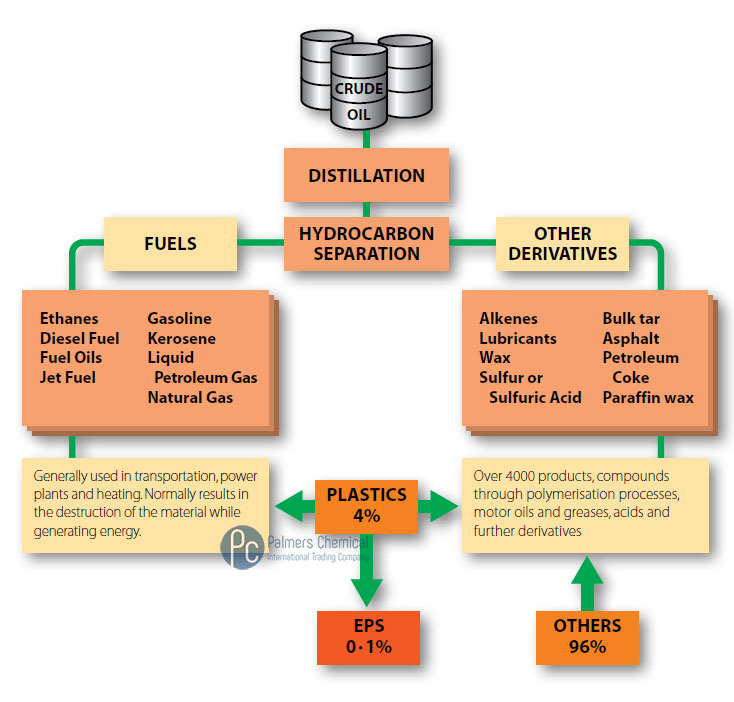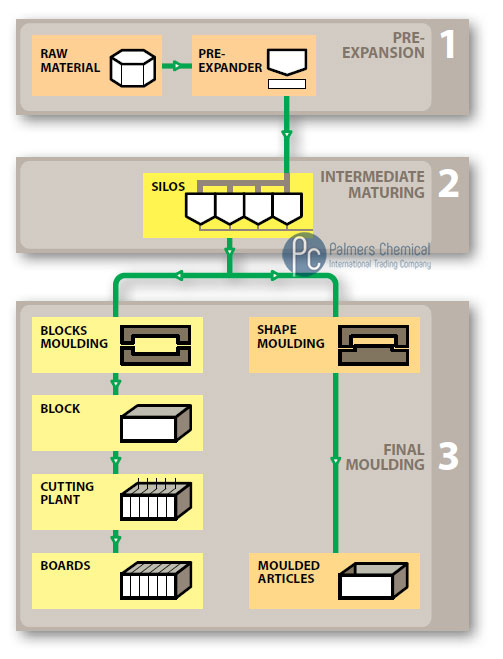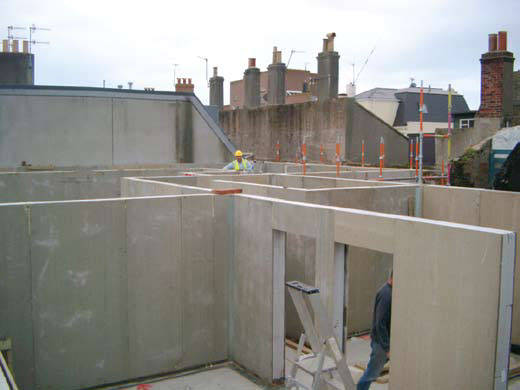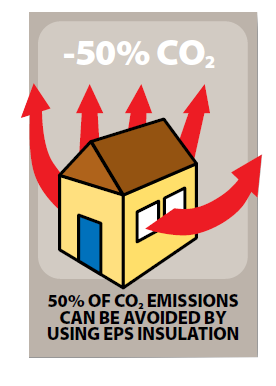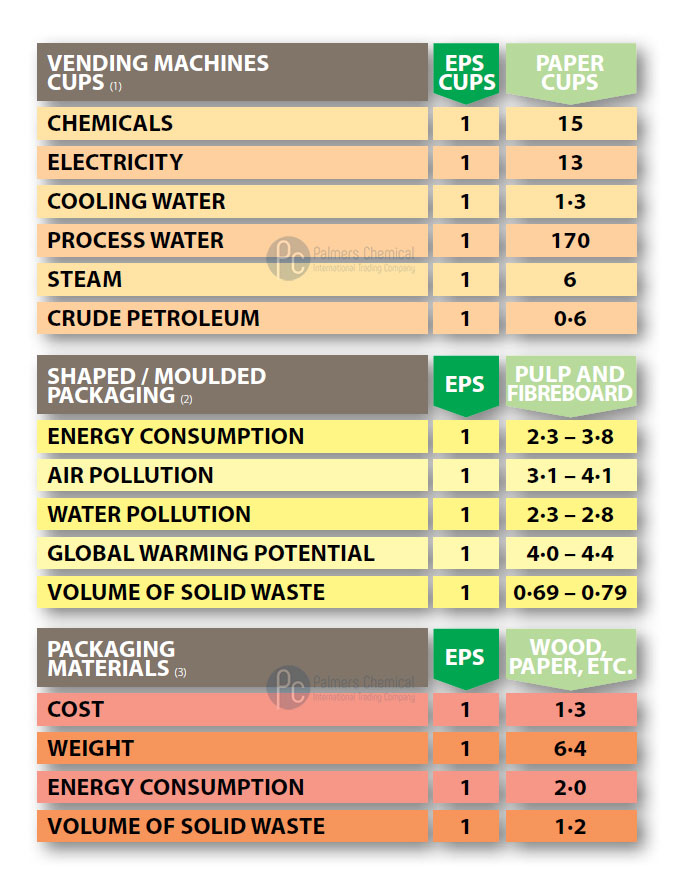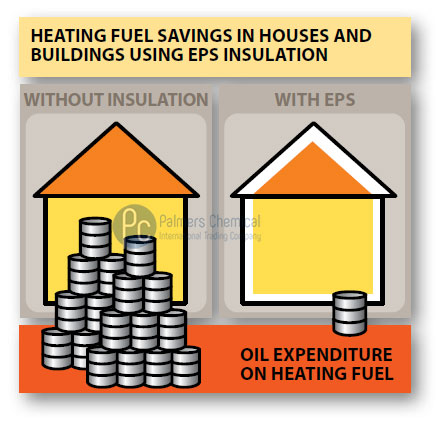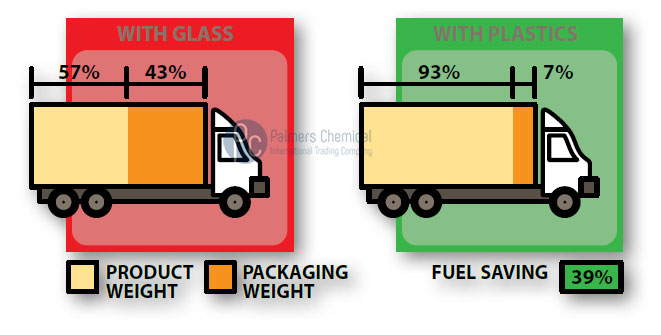Introduction
The impact on the environment of everyday materials is increasingly important if we are to reduce our carbon footprint and protect our natural heritage for future generations. Our aim, therefore, in this booklet is to provide you with factual, well-documented information about the environmental credentials of EPS.
EPS (expanded polystyrene) is an excellent material for packaging and for construction as it is a light yet rigid foam with good thermal insulation and high impact resistance.
This publication aims to provide balanced information based on the manufacture, use and recovery from waste of EPS in the packaging and construction sectors.
We also aim to demonstrate to customers, government organisations, consumer associations and the public that, by choosing or using EPS, you can be confident it is safe, complies with all relevant technical and environmental standards and can easily be recycled at the end of its primary use.
What is EPS?
Expanded Polystyrene (EPS) is a rigid cellular plastic, which is found in a multitude of shapes and applications. It is used for fish boxes, packaging for electrical consumer goods and for insulation panels for building. These are the most commonly known uses and we will mention others in this document. XPS (extruded polystyrene) is also plastic foam based on polystyrene that is formed by adding gas during extrusion not by expanding beads containing gas; which is how EPS is formed. A well-known use of XPS is the vac-formed polystyrene trays used for small portions of food that we see in the supermarket. The extruded polystyrene foam is a fine laminate that is only 2-3 mm thick.
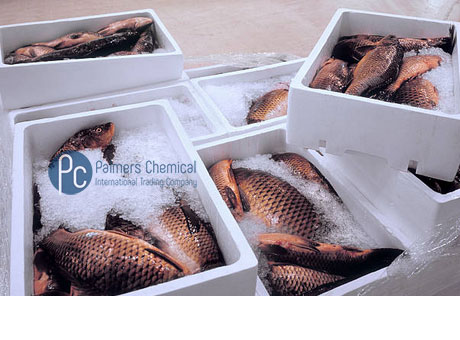
Raw Material
Expanded polystyrene is made from expandable polystyrene, which is a rigid cellular plastic containing an expansion agent.
EPS is obtained from oil as can be seen from the diagram.
Manufacturing Process
We can see from the diagram that EPS is brought to us from the oil well through a chemical process. Now we will see what happens in the transformation that leads us to Expanded Polystyrene (EPS).
The conversion of expandable polystyrene to expanded polystyrene is carried out in three stages.
1st stage
Pre-expansion
The raw material is heated in special machines called pre-expanders with steam at temperatures of between 80-100°C. The density of the material falls from some 630kg/m3 to values of between 10 and 35kg/m3.
During this process of preexpansion the raw material’s compact beads turn into cellular plastic beads with small closed cells that hold air in their interior.
2nd stage
Intermediate Maturing and Stabilisation
On cooling, the recently expanded particles from a vacuum in their interior and this must be compensated for by air diffusion. This process is carried out during the material’s intermediate maturing in aerated silos. The beads are dried at the same time.
This is how the beads achieve greater mechanical elasticity and improve expansion capacity — very important in the following transformation stage.
3rd stage
Expansion and Final Moulding
During this stage, the stabilised pre-expanded beads are transported to moulds where they are again subjected to steam so that the beads bind together.
In this way moulded shapes or large blocks are obtained (that are later sectioned to the required shape like boards, panels, cylinders etc).
Applications and Properties of EPS
The range of applications for expanded polystyrene is very wide. We are going to focus on these applications by putting them into three main categories and underline the properties that make EPS ideal for each one.
The three categories are:
- Packaging
- Construction
- Other applications
Packaging
Any product of any shape or size may be packaged in expanded polystyrene. The following range of applications only scratches the surface of what could be possible. The following only scratches the surface of what is possible in both the industrial and food packaging sectors using EPS
Packing Products
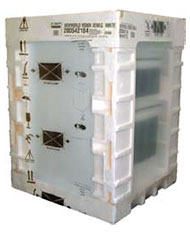 EPS is the best packaging option for almost any high value heavy product. Completely protected and safe from risk in transport and handling, EPS provides total protection for industrial products. These range from fragile pharmaceutical products to electronic components, electrical consumer goods, toys through to horticultural or garden products. All of these, and more, are able to arrive at their destination — often the home of the consumer — in perfect condition courtesy of their EPS packaging. EPS can be designed to fit perfectly into automated production lines, which include the packing of the product. The EPS pack adapts superbly to integrated production systems. The EPS packaging system is often the best alternative in terms of cost, versatility and efficiency. It is easy for workers to handle with no sharp edges or staples and can work equally well with sophisticated machinery.
EPS is the best packaging option for almost any high value heavy product. Completely protected and safe from risk in transport and handling, EPS provides total protection for industrial products. These range from fragile pharmaceutical products to electronic components, electrical consumer goods, toys through to horticultural or garden products. All of these, and more, are able to arrive at their destination — often the home of the consumer — in perfect condition courtesy of their EPS packaging. EPS can be designed to fit perfectly into automated production lines, which include the packing of the product. The EPS pack adapts superbly to integrated production systems. The EPS packaging system is often the best alternative in terms of cost, versatility and efficiency. It is easy for workers to handle with no sharp edges or staples and can work equally well with sophisticated machinery.
Food Packaging
Fish and shellfish, meat, fruit, ice cream — EPS packaging is the best way of keeping any foodstuff fresh. The perfect protection avoids hazards, breakages and wastage in the different stages of production and transport. Every day EPS packaging is ensuring that many different foods reach the retailer or the final consumer in perfect condition.
Food safety is paramount; a badly protected or poorly insulated product could arrive in a substandard condition. This could be a serious health risk to consumers or a serious wastage issue for a supermarket or food supplier.
This is an important ecological benefit of EPS. Its capacity to conserve food helps to reduce wastage of food and guarantees food safety.
New Applications for Moulded EPS
The versatility of EPS — it can be moulded into almost any shape — allows it to be used for a huge variety of different purposes.
Examples include:
- Chairs – as designed by Tom Dixon
- Book covers – designed by Jonathan Ive for Sir Paul Smith’s book
- Exhibition stand – designed by Michael Sodeau
- Snow sports helmet
- Infant car seats
- Air conditioning units
- Houses
- Seating for sports – Formula 1 cars and para-Olympic sailors
- Frog houses
- load-bearing structurally insulated panels (SIP’s)
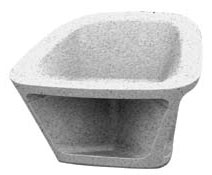
Properties of EPS
The following properties make EPS a perfect packaging material:
Shock absorption
The material has a high energy absorption index. This makes it the ideal material for protecting sensitive products during transport and storage. This unique level of protection makes EPS ideally suited for safety and sports helmets and for children’s car seats.
Thermal insulation
Due to its closed cell structure, which inhibits the passage of heat or cold, EPS has a high capacity for thermal insulation. This protects products such as vaccines or other pharmaceutical items and food such as fish and meat from sudden changes in temperature.
Low weight
EPS is 98% air making it the lightest packaging material available. This reduces the overall packaging weight and provides savings in fuel consumption — reducing the environmental impact of transporting products.
Retention of vitamin C
When packed in EPS, fruits and vegetables retain their vitamin C content longer than food packaging in other materials.
Resistance to humidity
The excellent mechanical and thermal properties are unaffected by humidity because EPS does not absorb water or water vapour.
Compressive resistance
The unique ability of EPS to resist compression makes it ideal for packing large items such as cookers and washing machines. Not only does EPS protect them in transit, but they can be stacked in the warehouse, saving on space and without any damage to the items.
Chemical resistance
Allows many products to be packed without the goods being affected.
Display effect to promote sales
EPS can easily be printed or coloured, it has a clean appealing appearance and can be used in many different ways to dress products to attract customers.
Hygienic nature
EPS is completely inert and innocuous, it meets all the food contact regulatory standards and can be used to package food or pharmaceuticals.

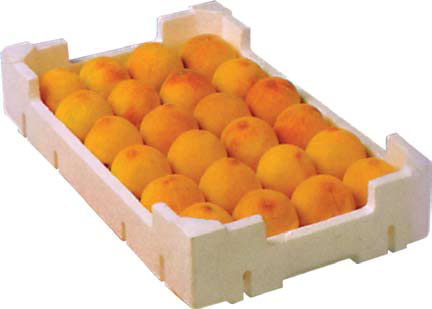
Applications as a Construction Material
EPS is used in many aspects of building work including large structures such as roads, bridges, railway lines, public buildings or even small family residences.
The characteristics of EPS make it ideal for use as a lightweight filler, insulation, as an element for decorating or imaginative touches, as a lightweight filling material in roads, to facilitate land drainage and so on.
We could visit any construction or building site and find products made from EPS carrying out diverse and important functions.
The following properties are important for these applications:
Low thermal conductivity
Due to its closed air-filled cell structure that inhibits the passage of heat or cold, a high capacity for thermal insulation is achieved.
Low weight
Densities of between 10 and 35kg/m2 allow light and safe construction works
Mechanical resistance
EPS has excellent mechanical properties making it good choice for load-bearing roof insulation, sub-pavement flooring, road-building, as loadbearing insulation, and so on.
Low water absorption
EPS does not absorb moisture and its thermal and mechanical properties are unaffected by damp, humidity or moisture.
Ease of handling and installation
The material can be handled in the usual way. You are guaranteed a perfect finish. The low weight of EPS makes it easy to handle and to transport to site.
Chemical resistance
EPS is completely compatible with other materials used in construction including cements, plasters, salt, fresh water and so on.
Versatility
EPS can be cut into the shape or size required by the construction project.
Ageing resistance
All of the properties listed above are retained over the whole of the material’s life and will last as long as the building itself. EPS is not altered by external agents such as fungi or parasites as they find no
nutritional value in the material.
Life Cycle Analysis
A life cycle analysis is a technique intended to quantify the total impact of a product during its production, distribution, use and recycling, treatment or disposal.
As individuals, and as organisations, all our daily actions have an impact on the environment. We use energy and resources, generate emissions into the atmosphere, pollute water and produce waste. One of the tasks of a responsible business is to calculate its impact on the environment and to find ways to reduce it.
However, some businesses use concern about the environment as a marketing tool and make claims that their products or
materials are ‘environmentally-friendly’ or have a low carbon footprint.
Responsible organisations will either conduct a thorough life-cycle analysis of a product, or calculate its carbon footprint using Carbon Trust methodology, (making their research public) before making statements of this kind
Reliable life cycle analyses will measure:
- Energy consumption
- Air pollution
- Water pollution
- Global warming potential
- Volume of solid waste
This table shows the results of a life cycle analysis that made a comparison of EPS with other materials. The data demonstrates that EPS packaging has much less impact on the environment than other competitive materials for the same use.
Questions about the effects of EPS on the Environment
Efficient Use of Natural Resources
Overall, some 90% of all the derivatives of crude oil are transformed into energy in one form or another, as transportation fuel, for electricity generation and for heating. Only 4% is used as raw material for making plastics.
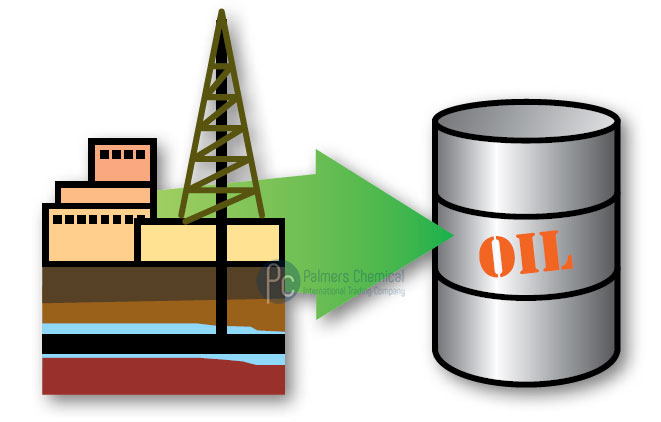
Using oil to manufacture products in EPS can be an efficient use of this natural resource, for example: Each kilogram of oil used to produce EPS insulation panels creates a saving of 150kg of oil used for heating residences and buildings (calculated over a 50 year period).
Using EPS to package a product will result in a reduction in fuel consumption compared to other materials.
Styrene
The monomer styrene, used in the manufacture of expandable polystyrene, has been manufactured for more than 60 years and is used for a wide range of plastics and plastic products.
Styrene also exists naturally and can be found in many foodstuffs including strawberries, beans, nuts, beer, wine, coffee beans and cinnamon.
Exhaustive research into the health effects of styrene has shown that although high exposure levels can be dangerous, like most chemical products, styrene is perfectly safe for normal use.
Based on the current EU classifications and the current draft of the UK’s risk assessment report, styrene monomer is considered to have low oral toxicity, and is not classified in terms of carcinogenicity or mutagenicity.
Pentane
Pentane, a non-CFC expansion agent is used during the EPS production process to expand the polystyrene granules into a cellular structure. Pentane is a slightly volatile liquid that is continually formed in natural processes. For example, it appears in the digestive systems of animals and in the anaerobic decomposition of vegetable matter by micro-organisms. It belongs to the same chemical family as other better known gases like methane, ethane, propane and butane which are used as heating fuel.
Pentane released during the EPS manufacturing process quickly turns into carbon dioxide and water in a photochemical reaction. It does not contain chlorine and so does not harm the ozone layer like CFCs or HCFCs. Although the pentane released during the production and transformation of EPS does contribute to man-made emissions of volatile organic compounds (VOCs) – these are only found in the 0-0.2% range Much greater quantities of methane are generated from the decomposition of human waste. Professor Hocking of the University of Victoria in Canada has recently shown that the methane released by decomposing standard size paper cups is 50 times higher than the quantity of pentane released in processing EPS cups.
The EPS industry is researching new ways to reduce the levels of pentane used and to capturing and re-using pentane. Pentane is not considered to be a substance hazardous to health by European health authorities.
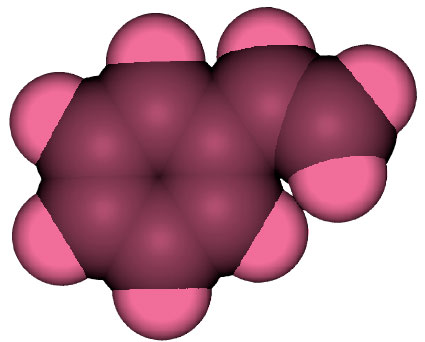
The Manufacturing Process
Steam is used as energy in the manufacturing of EPS. The steam itself is produced in boilers mainly using natural gas as fuel.
Water consumption used in the manufacture of EPS is very low. The water is reused many times in the process.
There is no solid waste generated during the EPS manufacturing process. Waste and off-cuts are easily put back into the production process.
No material is wasted and clean used packaging can be recycled into new product using this method.
There is no pollution to the surface or underground water supplies near an EPS plant because atmospheric and liquid emissions are very low during the manufacture of EPS.

